History and Overview of North Caicos
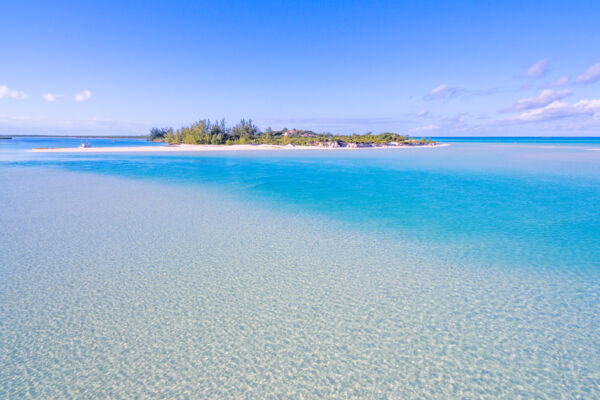
North Caicos is the second largest island in the Turks and Caicos, with a collective landmass of 45 mi² (116 km²). The island is located between Providenciales and Middle Caicos, on the north edge of the Caicos Banks and Caicos Islands underwater plateau.
North Caicos is sparsely populated, and supports a resident population of about 2000. A paved road causeway connects North Caicos to Middle Caicos, allowing for easy transit back and forth, with the result that both islands largely function as one.
As is the case throughout the Turks and Caicos, tourism is the primary industry on North Caicos. The island is home to a few dozen quaint vacation rental houses, as well as one small boutique hotel, the Pelican Beach Hotel.
| North Caicos Quick Facts | |
| Population | 1,312 (2012 Census) |
| Area | 45 mi² (116 km²) |
| Airport | North Caicos Airport (NCA) |
| Best Beach | Sandy Point Beach |
| Highest Point | 100 feet (30 m) Monkey Hill |
Life is generally quiet on North Caicos. The island supports several small grocery stores and restaurants, as well as a few bonefishing and tour charter companies. Small passenger ferries that travel between Bellefield Landing on North Caicos and Heaving Down Rock on Providenciales provide the primary means of transport to the island.
The Beaches of North Caicos
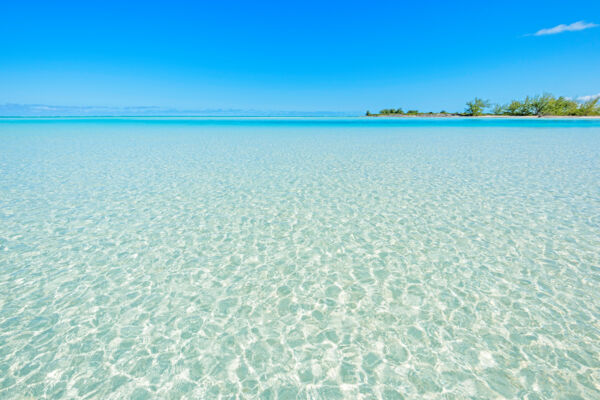
Amazing beaches are the defining feature of tourism in the Turks and Caicos, and as is the case with all islands in our archipelago, several great coasts are found on North Caicos.
Sandy Point Beach, found on the far north-western end of North Caicos, is the best beach on the island. This coast is located on the channel that divides North Caicos from the exclusive Parrot Cay, and offers exquisite shallows, sandbars, and turquoise channels.
Whitby Beach is another great attraction, with its sun-sheltering casuarina trees, white sand, and turquoise water. The seagrass that’s found further out shelters an interesting spectrum of life, including starfish, conch, stingrays, and turtles.
Three Marys Cays is a beautiful coast that’s centrally located, yet offers a great sense of seclusion. Three tiny and picturesque limestone islands are found off the beach here.
Greenwich Creek, another sandy inlet channel, is also spectacular. This waterway is the northern entrance to the brilliant turquoise waters of Bottle Creek lagoon, and is found at the far eastern end of Horsestable Beach.
Sights and Attractions
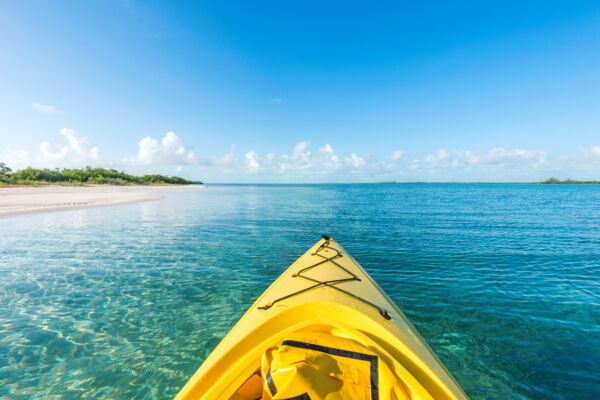
The sights and attractions of North Caicos parallel the laid-back atmosphere of the island, and tend to be quiet yet interesting attractions hidden in the verdant vegetation.
Wade’s Green, a late 1700s cotton plantation, is one of the finest historical sights in the Turks and Caicos, and is the best-preserved Loyalist-era plantation in the country. This site features the ruins of several stone buildings, as well as field walls and wells.
Cottage Pond is another unique site and is a small and natural blue hole pond, with a breathtaking depth of around 255 feet (78 m). This underwater cave was formed by the Karst Process of dissolution and is one of the better-known cave features in the Turks and Caicos.
North Caicos also excels as a birdwatching destination. There are countless marine wetland ponds to discover, as well as Flamingo Pond Overlook. It’s common to see the Caribbean flamingo, herons, egrets, and ducks of many types, ospreys, and many varieties of tropical dry forest birds.
The bonefishing and flats fishing surrounding North Caicos and Middle Caicos is exceptional, and although the two islands only support a limited number of tour operators in general, there are several bonefishing companies to choose from.
Why is North Caicos the ‘Garden Island’?
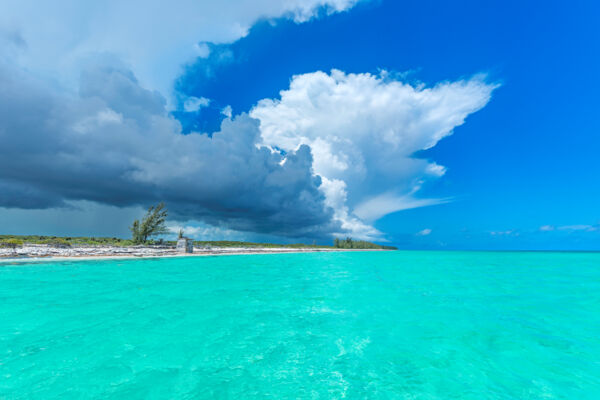
North Caicos has the well-deserved reputation of being the Garden Island of the Turks and Caicos, and this is largely due to the higher levels of rainfall that North Caicos gets over the other islands in the country.
The islands in the Turks and Caicos are quite small, yet considering this fact, local terrain plays an important part in predictable rain patterns.
Highly localized wind and rain conditions in the Caribbean can often be attributed to terrain features that cool or warm air, causing a temperature differential with surrounding conditions. The temperature differences result in air movement.
Much of the southern sides of North Caicos, Middle Caicos, and East Caicos consist of open rock saline tundra, and the midday sun tends to heat this terrain and surrounding humid air, which rises, cools, and condenses into rain, often occurring a few hours after midday.
North Caicos is perfectly situated to benefit from the afternoon showers, and consequently has higher rainfall levels than many other islands in the Turks and Caicos.
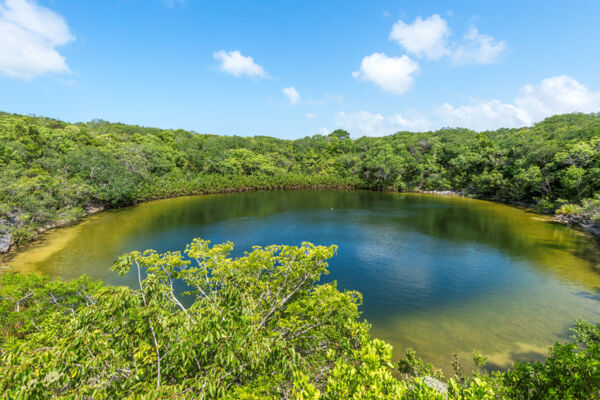
The late afternoon rain clouds often continue past North Caicos, and off into the Atlantic. Parrot Cay and Pine Cay are adjacent to North Caicos and tend to see increased rainfall as well, even supporting several natural freshwater ponds—a highly unusual sight in the Turks and Caicos. Providenciales, however, is a bit too far south to reap the benefits of additional rainfall.
In 1971, the British Institute of Geological Sciences conducted a thorough nation-wide survey of freshwater resources in the Turks and Caicos, and unsurprisingly North Caicos had the greatest reserves, both in low salinity, and overall quantity. The underground freshwater lens at Kew was found to be 30 feet (9 m) thick, which is about 3 times thicker than what could be found on many of our larger islands.
History of North Caicos
Much of what is known about the Turks and Caicos is from a rather recent epoch in history, relatively speaking, starting with the pre-Columbian Lucayan peoples at around the year 700AD.
The Pre-Columbian Lucayan Peoples
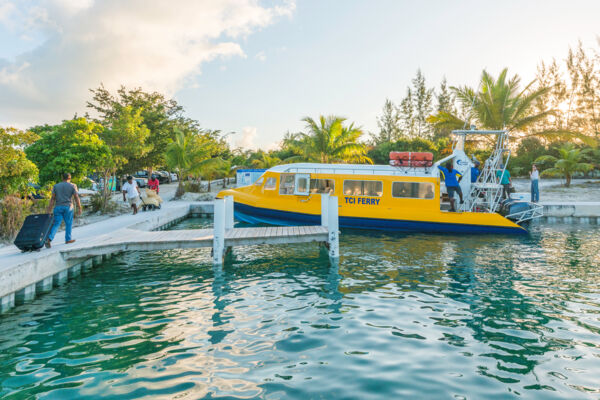
The first known inhabitants of the Caicos Islands were the Lucayans (also known as the Tainos). It’s thought that these people began to migrate up through the Caribbean islands from South or Central America roughly 1300 years ago.
It’s not accurately known when the Turks and Caicos saw initial settlement. It’s believed that many of the Lucayan historical sites in the Turks and Caicos tend to have been settled within a few centuries of the arrival of Christopher Columbus, yet dating is mainly based on what were likely trading sites, which may not accurately reflect the complete history.
Theo de Booy, a famous early 1900s anthropologist, visited the Turks and Caicos and spent a bit of time examining the many cays and islands in the archipelago. He found Lucayan cultural remains, including tools, ceramics, and bone, at many sites across North Caicos.
The Plantations and Agriculture
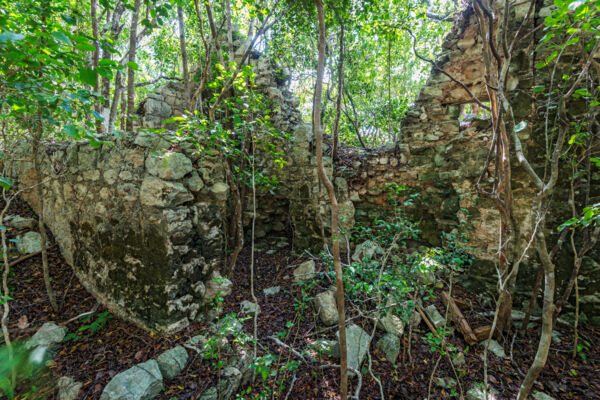
After the disappearance of the Lucayans, the Caicos Islands were largely uninhabited until the latter 1700s, when Loyalists in America, displaced by the American Revolution, were granted land in the Bahamas and Turks and Caicos by the British Crown.
The Loyalist planters would often develop extensive cotton and sisal plantations, and the settlement of Kew on North Caicos was the center of the industry in the Turks and Caicos. At the height of the era, dozens of plantations produced Sea Island Cotton, which was well-received abroad.
The plantations, with names such as Wade’s Green, Belleview, Teren Hill, Belmont, and St. James, were initially quite successful, until hurricanes, soil erosion, and infestations put an end to the industry.
The Modern Age
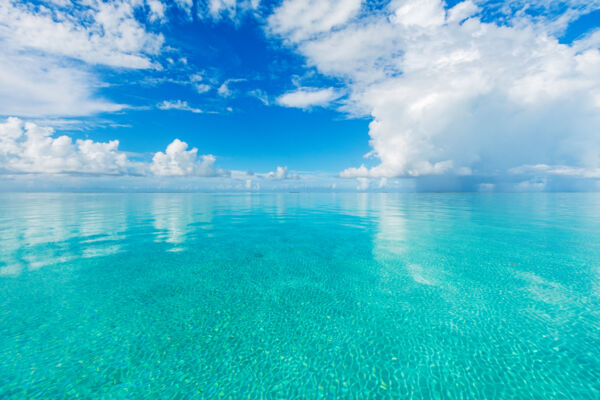
As was the case throughout the Turks and Caicos, North Caicos experienced many interesting albeit often short-lived episodes of activity.
The River Arc was a mysterious arrival. This freighter ship simply appeared one morning in 1979, grounded on the barrier reef off Whitby. The generators on the vessel were still running, and the ship was likely being used for smuggling. The wreck stood for decades, yet today only a small section of the bow remains above the waterline.
Hidden in a coastal jungle between Whitby and Pumpkin Bluff are the ruins of the Prospect of Whitby hotel. There have been many failed resort attempts in the country, but it’s interesting to note that at one time this small beach retreat was the most expensive accommodation in the Turks and Caicos.
The Turks and Caicos has had a rather poor experience raising food, yet has managed to support at various times a crab farm, conch farm, and a sea sponge farm! The crab farm (West Indies Mariculture) on North Caicos was located at Greenwich Creek near Horsestable Beach, and operated for a few years before shutting down.
Visiting North Caicos
Most visits are day trips from Providenciales, although North Caicos does see a number of overnight visitors. Several beach villas are found on Hollywood Beach and elsewhere on the island, and rental cars are available from the ferry port. The largest hotel on North Caicos is the Ocean Breeze Resort, which offers 26 rooms near the quiet Horsestable Beach.
